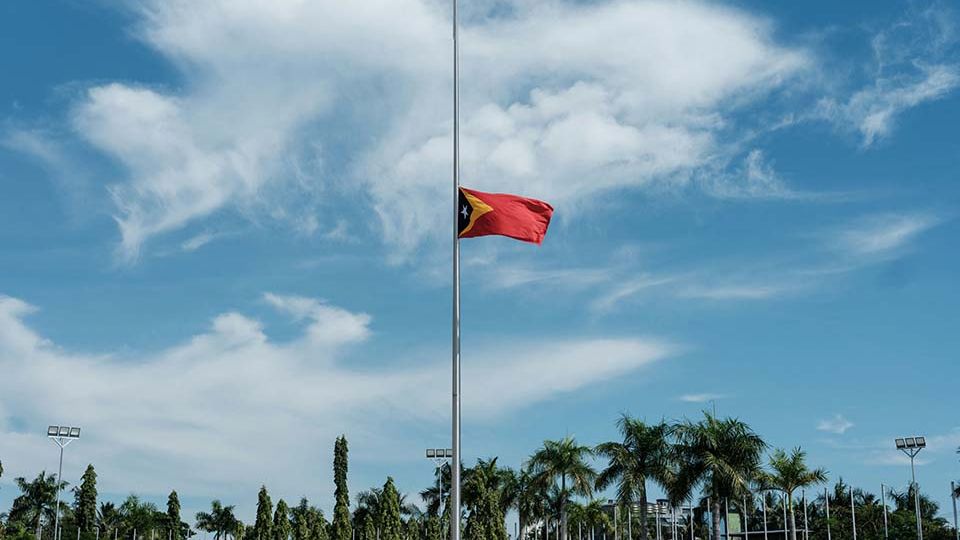May 21, 2025
BANGKOK – Today, May 20th, marks a significant milestone in Southeast Asia as the people of Timor-Leste proudly celebrate the Restoration of their Independence.
This annual commemoration honors the culmination of a decades-long struggle for self-determination, finally achieved in 2002.
For those unfamiliar with this remarkable nation, Timor-Leste represents an inspiring story of resilience, a unique cultural heritage, and a strengthening relationship with Thailand.
Located in the eastern half of Timor island, sharing borders with Indonesia, Timor-Leste boasts captivating geography and biodiversity.
Its tropical climate sustains the globally significant Coral Triangle, where vibrant reefs teem with marine life.
On land, rare species like the Timor Green Pigeon and Black-banded Flycatcher highlight the importance of preserving this natural heritage.
The cultural identity of Timor-Leste reflects a fascinating blend of indigenous traditions interwoven with Portuguese colonial influences and periods of Indonesian administration.
This rich tapestry appears in the nation’s linguistic landscape, where Tetum and Portuguese serve as official languages, while Indonesian and English are widely spoken.
Faith plays a central role in Timorese society, with over 97% of the population practicing Roman Catholicism.
Interestingly, many communities simultaneously honor ancient animist beliefs, revering ancestral spirits through nature-based rituals often centered around sacred houses known as Uma Lulik.
Timor-Leste’s path to sovereignty is marked by extraordinary courage and determination.
Archaeological evidence indicates human presence on the island for at least 42,000 years.
The Portuguese established colonial rule in the 17th century that lasted until 1975, with a brief interruption during Japanese occupation in World War II.
Following Portugal’s withdrawal, Indonesia’s annexation triggered a 24-year occupation characterized by significant resistance.
The unwavering spirit of the East Timorese people, championed by Nobel Peace Prize laureates José Ramos-Horta and Carlos Filipe Ximenes Belo, eventually led to a UN-sponsored referendum in 1999, where an overwhelming majority voted for independence.
May 20th, 2002, therefore represents the historic day when the United Nations formally transferred authority, establishing the first new sovereign state of the 21st century.
The nation’s flag—with its bold red symbolizing struggle, black representing past oppression, yellow reflecting colonial history, and a white star guiding toward peace—encapsulates this journey.
Even the country’s name, “Eastern-East” (Timor from the Malay word for “east” and Leste, the Portuguese equivalent), speaks to its unique identity.
As Timor-Leste celebrates Independence Restoration Day with parades, cultural performances, and ceremonial speeches, it also focuses on strengthening international partnerships.
The relationship with Thailand has seen notable progress in recent years.
A key development came in June 2024 with the signing of a tourist visa waiver agreement, allowing citizens of both nations to enjoy reciprocal 30-day stays without visas, fostering greater tourism and cultural exchange.
Educational and research collaborations are also expanding. Recent discussions between Timor-Leste’s Foreign Affairs Minister and Kasetsart University in Thailand have explored joint research in agriculture and fisheries, with the Thai university offering to host Timorese students for specialized training.
Thailand has consistently supported Timor-Leste’s application for full ASEAN membership, which promises to enhance economic opportunities between the two nations once Timor-Leste ratifies the necessary 66 economic agreements. Beyond trade considerations, Thailand has extended assistance in crucial areas such as public health, education, and infrastructure development.
Timor-Leste’s distinctive cultural identity is showcased through traditions like Tais weaving—intricate handwoven textiles with regional patterns used for ceremonial gifts and everyday wear.
Music and dance blend indigenous rhythms with Portuguese and Indonesian influences, while traditional performances like the Likurai, historically performed by women welcoming returning warriors, offer glimpses into the nation’s heritage.
Colorful celebrations such as the Kilimutu Festival at sacred volcanic lakes and the vibrant Baucau Carnival highlight the country’s spiritual and artistic expressions.
The nation’s architectural landscape, featuring ethnic totem houses and Portuguese colonial buildings in cities like Dili and Baucau, further reflects Timor-Leste’s unique character.
As Timor-Leste marks its independence today, it stands as a testament to the resilience of its people and the richness of its cultural identity.
Its growing partnership with Thailand represents a promising avenue for future collaboration, further connecting these two vibrant Southeast Asian nations as Timor-Leste continues its journey of nation-building and international engagement.


